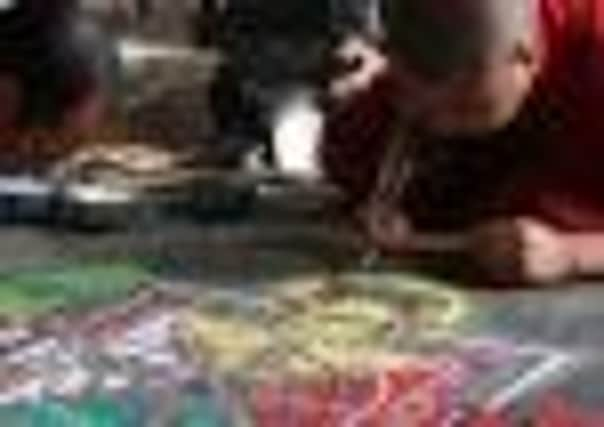Interview: ‘The world is just a wonderful place full of wonderful things’ - Ron Fricke, director of Samsara


‘IT’S kind of like doing a painting,” says director Ron Fricke. “You keep working on it and it changes, but the aim is there and the frame of reference is the same and it comes together as a real creative process.” As analogies go, the Baraka director is perhaps underselling what it really takes to bring one of his globe-spinning, non-verbal, cinematic epics to the big screen.
Having helped pioneer the form as the cinematographer on Godfrey Reggio’s groundbreaking Koyaanisqatsi before going on to make Baraka (his own acclaimed widescreen snapshot of the a day in the life of the planet), he’s just spent the past five years continuously shooting and editing his latest film, Samsara, another visual stunner that takes audiences on a stream-of-consciousness journey through more than 100 locations and 25 countries. Given the effort it took, it’s perhaps small wonder that the film is his first since Baraka’s release 20 years ago.
Advertisement
Hide AdBut if Fricke’s work-rate makes Terrence Malick look prolific, it seems appropriate that the title of his new film is a Sanskrit word meaning the “ever-turning wheel of life”: its implied impermanence ties in neatly with Fricke’s desire to create another portrait of the planet in its permanent state of flux.


“That flow between everyone and everything, that’s what we wanted to show,” says Fricke of Samsara, which uses a combination of 70mm widescreen cinematography, advanced time-lapse photography and strangely juxtaposed images to give us a sense of the complex way in which the world, and all life upon it, turns.
Floating over awe-inspiring scenes of unspoiled beauty, such as the Salt Pans of Namibia and the otherworldly Mono Lake in California, Fricke’s camera certainly gives us a sense of the harmonious ways this can be achieved. But it also suggest all the ways that life can get thrown out of balance by surveying, say, the aftermath of Hurricane Katrina or the various manmade constructions – battery chicken plants in China, Cebo prison in the Philippines, the West Bank Barrier, lifelike automatons in Japan – that appear to break the natural order of things. “Those are probably the toughest and hardest images to look at in the film. When you see people in jail, animals in cages, dolls replicating humans and walls around religions, it just breaks that flow.”
Although some will inevitably read political agendas into this, for Fricke it’s really all about capturing the way life interacts with its surrounding environment. “We’re not working with actors or dialogue, so the image is the main character,” says Fricke. “That’s the reason we’re lugging around these 70mm cameras; they allow us to dig deep into the essence of things.”
Fricke developed this approach – moving front-and-centre everything that movies traditionally consign to the background, such as landscapes, architecture, crowds and music – in collaboration with Koyaanisqatsi director Godfrey Reggio. If pressed, however, he reckons the roots probably go deeper. The son of a military man, his professional wanderlust probably came, he thinks, from moving from place to place on account of his father’s various postings across Europe. His appreciation of widescreen vistas, meanwhile, came from his childhood love of David Lean’s films and, later, the hallucinatory Star Child sequence in Stanley Kubrick’s 2001. “That whole 20 or 30-minute non-verbal sequence just completely blew my mind when I was a student. I was like, ‘Oh my god, you can actually do this in a big movie?”
Such has been the impact of Fricke’s work, though, that the cinematic influence now flows in the other direction. The time-lapse cinematography he pioneered in his early work soon found its way into advertising, music videos, television (especially nature documentaries) and mainstream movies, and it’s a fair bet that Samsara’s stunning and innovative aerial nighttime and steadicam time-lapse sequences will be quickly replicated in other mediums. There’s also, of course, the influence of the location work itself. It’s not hard to imagine, say, the Bond producers pouring over his films searching for new, exotic locales. “Oh probably, yeah,” chuckles Fricke. “I’m sure we’re a good resource.”
Advertisement
Hide AdIn fact, he’s been more than a resource. Back in the early 1980s, Francis Ford Coppola hired him to work on his subsequently abandoned sci-fi dream project Megalopolis and, prior to embarking on Samsara, another early champion, George Lucas, tapped Fricke to shoot second unit location work on Star Wars – Episode III: Revenge of the Sith.
Despite this, Fricke has no plans to move into directing narrative fiction films – no matter how labour-intensive his own approach is to filmmaking. “There’s another big, non-verbal epic out there waiting to be made, for sure,” he says of his future plans. “The world is just a wonderful place full of wonderful things.” First, though, he reckons he needs a break. He laughs. “But not for 20 years…”
• Samsara is on selected release from tomorrow.